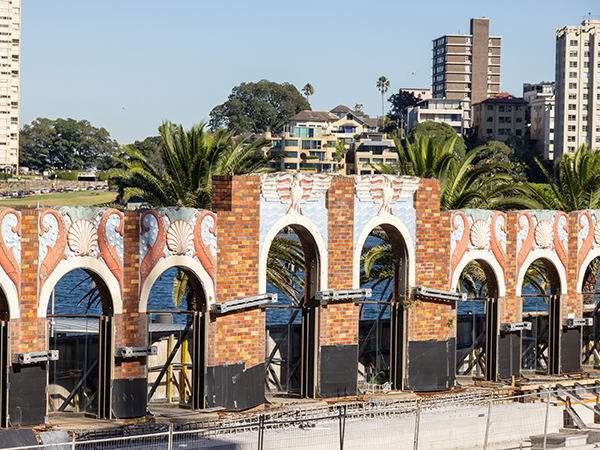
North Sydney Olympic Pool looking to maintain its heritage elements
The North Sydney Olympic Pool holds distinct heritage significance. Not only does it sit in a prime location, between the Sydney Harbour Bridge and Luna Park, but it has a rich social history and is also architecturally interesting.The North Sydney Olympic Pool holds distinct heritage significance. Not only does it sit in a prime location, between the Sydney Harbour Bridge and Luna Park, but it has a rich social history and is also architecturally interesting.
When it was built in 1936, its architects Rudder & Grout took ample inspiration from the neighbouring Harbour Bridge, as well as the interwar neo-classical, or ‘stripped classical’, design trend of the time. Their portfolio of work in Sydney, which includes Petersham Town Hall, showcases similar architectural decisions.
Many people believe the Pool’s design is inspired by the Art Deco movement, which was a popular trend during this era. However, that’s a common misconception according to Dr Mark Ian Jones, Design Historian at the University of NSW Art and Design.

“Art Deco is a very broad term that encompasses a lot of styles. We can make the association (there are some similarities) but it’s not strictly correct. The Pool’s design is interwar neo-classical which flows on from the free-classical movement. There were no rules that the architects were following. It really was this free, quite liberating style. While there is some symmetry, the architects weren’t necessarily slavish to that. Their choices were a bit experimental, underpinned by classical design style.”
Some of the distinctive architectural elements include the heritage-listed stair tower, the classically inspired arches and the quirky aquatic-themed decorative motifs. The latter feature frogs, swordfish, pelicans and seashells made of stucco which are thoughtfully placed throughout the Pool’s building, offering a sense of playfulness and fun. They reflect the environment – a nod to the harbour and all that there is to enjoy about being by the seaside – while not going overboard with superfluity.
It's these decorative elements in particular that make a visit to the Pool such a special experience. Dr Jones says that’s because heritage is an important part of belonging.

“It offers something comforting and familiar, reminding us of the past and more innocent times,” he explains. “There is great history in the way we design and why we design. There’s an argument that keeping part of something is worse than keeping all of it, but in this instance [with the Pool redevelopment], the decorative elements shouldn’t be superfluous in that.
“When you understand the original architects’ intention with the Pool, and the historical relationship of those elements to the other landmarks [the Harbour Bridge and Luna Park], it would seem nonsensical to lose them. The Pool works in concert with the Harbour Bridge and Luna Park which were all 1930s builds. There’s a nice community of buildings there; they’re in conversation with each other.”
North Sydney Council historian Ian Hoskins agrees and offers a deeper perspective on the relationship between the three buildings. “You have the monolithic Bridge on one side, a serious engineering feat that showed the rest of the world just what Australia was capable of. In the middle, the Olympic Pool – about to show the world that this country, with a tiny population compared to the US, has some astonishing athletes. It marks the beginning of Australia’s sporting identity; the Golden Age of swimming is coming. Then, on the other side of the Pool, all sense of seriousness is gone with Luna Park which is the epitome of Australian larrikin culture.

“We go from the sublime to the ridiculous,” he continues. “The sublime, which is the Bridge – something that overawes you and almost terrifies you with its size – to the ridiculous, which is Luna Park. And in the middle of both of those structures is the Pool. It balances the seriousness with the fun. It sums up Australia in this era.”
The Pool’s redevelopment is well underway, with North Sydney Council saying it is careful not to lose the heritage elements that locals and visitors know and love.
It’s expected that it will reopen to the public in mid-2024.
Images: Supplied
- Popular Articles
- Product News
Greener perspectives: Matthias Irger
- Industry News
Net zero home to power a sustainable future










